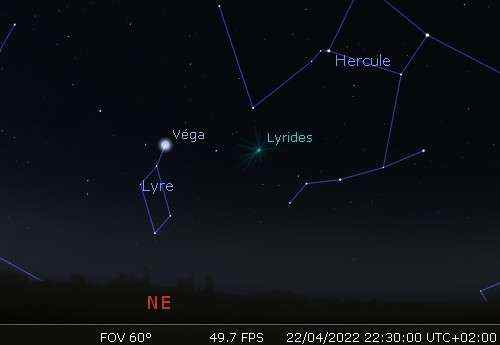Interested in what you just read?
Subscribe to the newsletter The ephemerides : everything that will happen in the sky during the coming month: what to watch, where to watch? All our newsletters
Active from April 16 to 25, the swarm ofshooting Stars from Lyrids takes its name from the constellation where they came from long ago: the Lyra. But over time, their point of origin slipped into the constellation of Hercules. It is the oldest swarm known to date. The first observations date back to 2,500 years ago.
In 1867 theastronomer Edmond Weiss demonstrated that this swarm originated from the comet Thatcher (C/1861 G1), discovered by AE Thatcher on April 5, 1861. It returns to the vicinity of Sun every 415 years.
To observe the Lyrids, look around 8:30 UT for the constellation of Hercules above the northeast horizon. Look to the left of the constellation, next to the bright Vega starbecause that’s where most of the shooting stars will come from.
Their speed49 km/s, is considered average, compared to the fastest which reach 71 km/s.
The hourly rate is estimated at 18. You will therefore be able to attend a great show, especially since this swarm often has surprises in store… The absence of the Moon will only be better for enjoying a very dark night. remains the postman weather report…
